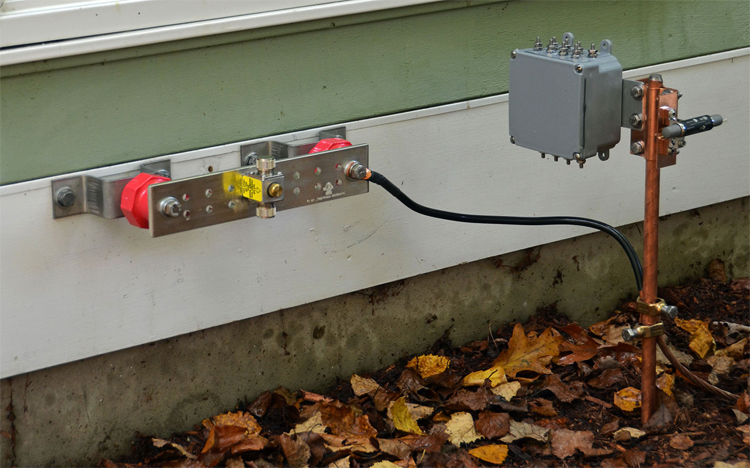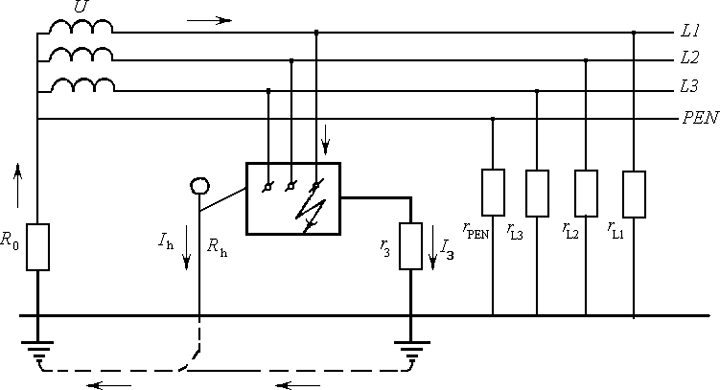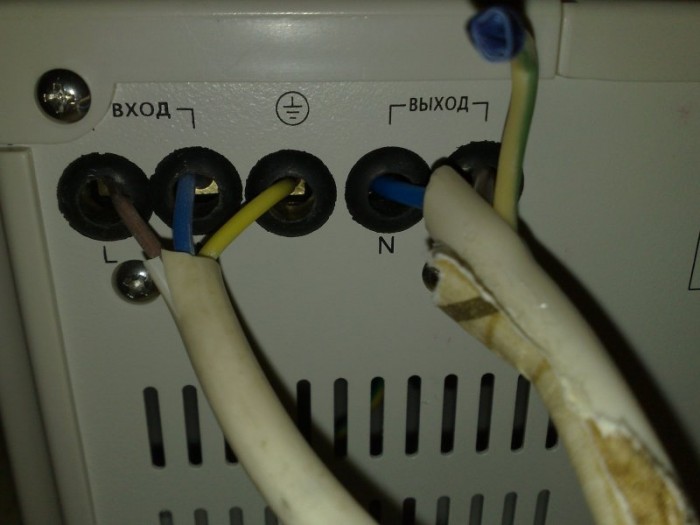Job interviews are not easy. If you want to apply for...


Grounding is now commonly referred to as devices that could be used to create a reliable current path through the ground. In the vast majority of cases, such a need arises when consumers need to ensure the operation of the electrical installation in operating or emergency operating modes. A striking example of working grounding is the deliberate connection to the ground of all kinds of arresters, transformers, or generators, as a last resort.
As a working grounding, the connection to the grounding of lightning rods is also often perceived, the presence of which is determined by the need to protect the electrical installation from induced overvoltages, as well as from direct lightning strikes. That kind of grounding, which is carried out in order to ensure the safety of people, is commonly called protective. 
A distinctive feature of this type of grounding is that absolutely all metal parts of the body, frames, frames, corresponding fences, and so on are subject to it. As for the so-called grounding device, it is customary to call it a combination of a grounding conductor and grounding conductors.
At the present time, it is customary to distinguish between such a thing as an artificial ground electrode. In its capacity, the grounding conductor acts, the electrically conductive parts of the communication of which are in contact with the ground. The grounding conductor is the grounded parts connected to the grounding conductor. 
Those parts that are subject not only to grounding, but also to grounding include the following:
Generally speaking, it should be noted that distinctive features protective and working grounding:
Protective grounding, at the present time, is called deliberate electrical connection with the earth, or its equivalent, which, by the way, can also be metal non-current-carrying parts. The latter are often under voltage, which occurs due to a short to the case or for some other reason. The main purpose of protective grounding is to eliminate electric shock in the event that the consumer accidentally touches the body of the electrical installation, as well as any other non-current-carrying metal parts that are energized as a result of a short circuit to the body, for example

The working ground, in turn, is intentional connection to earth at once of several separate points of an electrical circuit. They can be neutral points of the windings of generators, as well as various instrument transformers. Unlike protective earth, the working one is intended to provide correct work electrical installations, and regardless of the conditions in which the latter will work: in normal or emergency. This type of grounding is carried out directly - that is, by connecting the grounded parts together with the so-called ground electrode.
Speaking about what is called protective grounding, it should be noted that this term refers to the deliberate electrical connection of a separate part of an electrical installation (most often, the housing) with a special grounding device, which is carried out to ensure electrical safety. This measure is to protect a person touching the housing or any other part of the electrical installation.
It is important to note that the smaller the value of the grounding device used, the better it can cope with its task - this can be seen in any example. And you can take advantage of all the possibilities of the technology in question if you purchase sockets equipped with a grounding contact. However, even such devices must be chosen thoughtfully, and therefore every person dealing with electrical installations should know what protective earthing of electrical installations is and how to organize it.
In the event that an insulation breakdown occurs between the active phase and the body of the electrical installation, the latter may become energized. And it is natural that if a person touches the device at this time, this can have sad consequences for him. And grounding and electrical safety measures can help prevent electric shock. Moreover, such a system will consist directly of ground electrodes and special conductors.

If we consider the grounding device, it is important to note that grounding conductors can be either natural (metal structures of buildings and structures that are connected to the ground) or artificial (steel pipes, angles and rods). Well, depending on the type of conductors used, a protective loop and a working ground loop can be created.

The working neutral conductor is designed to power electrical installations, and therefore its cross section reaches such values that it is possible to pass the operating current. And the protective conductor allows you to create a short-term short-circuit current, which ensures a quick disconnection of the electrical installation, the operation of which has been disrupted, from the power supply. That is, the purpose of protective grounding is precisely to ensure human safety. And that is what is gaining the most popularity these days.
Since most specialists use a variety of mobile conductors (steel pipes, neutral wires devoid of switches and fuses, etc.), they create a portable protective ground. Moreover, the calculation of the system under consideration will directly depend on what materials were used in the process of its creation, and to ensure the safety of work, which particular installation it is used.

Special protective grounding can be used in a residential building or in a country house, in a workroom or in production. Moreover, it is necessary to understand its principle of operation not only for specialists directly involved in the performance of work in this area, but also for ordinary people. Note that the purpose of using the system under consideration is to reduce the step and touch voltages to safe values. Moreover, the touch of voltage and step in this case may be due to both a short circuit to the case and other reasons. And the installation is carried out in such a way as to effectively reduce the potential of one or another equipment or to equalize the potentials of the equipment and the base on which the person is at the time of contact.

There are certain rules for a protective earthing device, on which its effectiveness directly depends. Specialists are well aware of such rules and try to strictly comply with them. Therefore, it is very important that all types of portable protective earthing are installed only by people who have the appropriate qualifications. Only in this case can it be guaranteed that the process will be carried out correctly, in compliance with all requirements and norms, and that the final result will be able to demonstrate high efficiency.
Working ground- deliberate connection to the ground of individual points of the electrical circuit, for example, neutral points of the windings of generators, power and instrument transformers, arc extinguishers, transverse compensation reactors in long-distance power lines, as well as phases when using earth as a phase or return conductor. Working grounding is designed to ensure the proper operation of the electrical installation under normal or emergency conditions and is carried out directly (i.e., by connecting the grounded parts with a ground electrode with a conductor) or through special devices - breakdown fuses, arresters, resistors, etc.
Wikimedia Foundation. 2010 .
working ground- In the Rules for the installation of electrical installations, the term "working grounding" is widely used. However, in the International Electrotechnical Vocabulary (IEC) and other standards of the International Electrotechnical Commission (IEC), this term is not ... ...
Working ground- Grounding of current-carrying parts of the electrical installation, necessary to ensure the operation of the electrical installation Source: RM 4 249 91: Automation systems for technological processes. The device of grounding networks. Allowance for VSN 205 84 / MMSS ... Dictionary-reference book of terms of normative and technical documentation
WORKING GROUND- grounding, designed to improve the functioning of the qualities of the product ...
working ground (unattended amplifying [regeneration] point)- Grounding, which ensures the transmission of remote power according to the "ground wire" scheme of amplifiers [regenerators], as well as the inclusion in the system of a single potential of the metal sheath of the cable, the NUP [NRP] tank, cases and screens ... ... Technical Translator's Handbook
GROUNDING, electrical connection of elements of electrical machines, devices, devices, etc. with earth in order to protect people from electric shock (protective earth) or the use of earth as a conductor (working ... ... Modern Encyclopedia
grounding- intentional electrical connection of what l. points of the electrical network, electrical installation or equipment with a grounding device, i.e. with a combination of a grounding conductor and grounding conductors. The grounding conductor (or group of conductors) is located ... Russian encyclopedia of labor protection
GROUNDING- electrical connection to the ground or its equivalent of metal cases of electric power, telephone, telegraph, television, radio engineering, electromedical, electrometric, gas and other installations or devices. Depending… … Great Polytechnic Encyclopedia
The article is not a normative document. Warning: the article is purely informative and is not a normative document. When performing work related to electricity, one should be guided by ... Wikipedia
Working (functional) grounding- 1.7.30. Working (functional) grounding grounding of a point or points of current-carrying parts of an electrical installation, performed to ensure the operation of an electrical installation (not for electrical safety purposes) ...